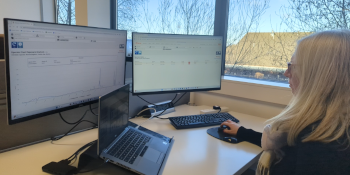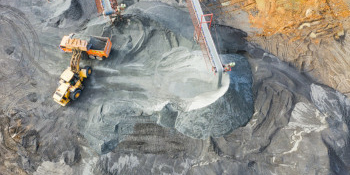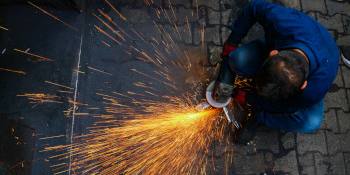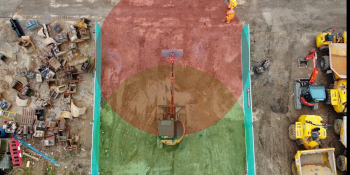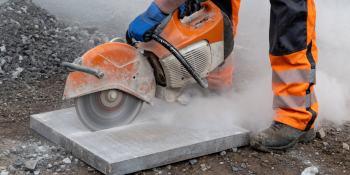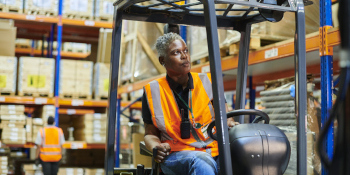When it comes to monitoring workers’ exposure to vibration on your worksite, can you afford not to get connected?
The principle of ‘Prevention Cost’ is straightforward: if you invest in items or programs designed to prevent, detect, or minimise areas of weakness or imperfection within a given process, the process will produce more perfect results, more efficiently.
This idea is the foundation for training and intervention programs, statistical process control, and technical support initiatives across a wide range of industries. Said simply: when you take the time to evaluate your processes and then refine them, you can expect more from them. This applies to productivity, quality, and cost efficiency.
The Financial Cost of Damage Control.
On the opposite end of the spectrum from prevention – which improves controls and processes and leads to enhanced productivity, increased quality of work, and less financial waste – is damage control.
Damage control is a familiar concept: it becomes necessary when something has gone wrong, and it’s usually viewed as undesirable: generally speaking, people and companies try to avoid situations that require them to spend time, money, or both, off-setting or minimising otherwise avoidable harm. In the case of exposure to dangerous levels of vibration, the avoidable harm is also permanent – by the time an individual has been diagnosed with HAVS, any attempt to meaningfully mitigate damage after the fact, is pointless.
When it comes to how companies monitor and reduce their workers’ risk from exposure to vibration, the financial cost of doing damage control is rising, and fast. Since 2016, financial penalties levied against companies for failure to adequately assess and address this risk have risen nearly 300%.
Fines for companies’ failure to accurately assess and respond to their workers’ risk from exposure to HAV can easily reach hundreds of thousands of pounds, but the actual financial cost of such a penalty doesn’t stop there: in addition to penalties levied by the HSE, companies face claims for compensation by affected workers, and costs associated with defending those claims can soar exponentially.
“With over 2 million workers in the UK at risk of exposure to vibration on a daily basis, and given employers tend to underestimate the risk of those most likely to develop HAVS by 76%, the potential for an employee to suffer a meaningful financial loss is real and immediate.”
The HSE reasons that it costs companies between £7,000 and £36,000 to process every £1,000 paid out in compensation claims, in addition to the amount paid for the claim and any associated legal fees. With over 2 million workers in the UK at risk of exposure to vibration on a daily basis, and given that employers tend to underestimate the risk of those most likely to develop HAVS by 76%, the potential for an employer to suffer a meaningful financial loss is real and immediate.
The Financial Benefit of Getting Connected.
The option to implement a system that can help companies more accurately monitor and reduce their workers’ risk from exposure to HAV is also real and immediate, and it’s cost-effective. Relative to the cost of damage control, prevention is – to state it plainly – a bargain.
In the case of a £500k fine recently levied by the HSE against an employer for failure to control exposure to unsafe levels of vibration, the total cost to provide HAVWEAR to the three workers affected for an entire year would have been one-quarter of 1% of the total £500k penalty. To provide protection to the same three workers for three years, dating back to when they were first diagnosed with HAVS, the total cost for HAVWEAR would have totalled just over £4k, or approximately 8% of the cost of the penalty ultimately paid by their employer.
“In the case of a £500k fine recently levied by the HSE against an employer for failure to control exposure to unsafe levels of vibration, the total cost to provide HAVWEAR to the three workers affected for an entire year would have been one-quarter of 1% of the total £500k penalty.”
The astonishing difference between the cost of prevention and the cost of damage control isn’t the only place where getting connected has vast potential to improve a company’s bottom line. When it comes to managing exposure to vibration, a company’s obligation to its workforce includes identifying each employees’ daily exposure to vibration, providing adequate health surveillance, and taking action – when necessary – to eliminate or reduce any individual workers’ risk from exposure to unsafe levels of vibration.
That type of obligation – to quantify a person’s unique exposure to vibration – isn’t art, it’s science.
Accurately monitoring anything requires the right tools, and exposure to vibration is no different. Manual paper systems – those traditionally used by companies to track activities like tool usage – fall well short of providing clear and adequate information about workers’ exposure to dangerous workplace conditions. Not only do they provide woefully inaccurate, unreliable information, they’re a financial liability, especially when compared to the cost of getting connected.
The cost of implementing and utilising HAVWEAR over the three-year life of the product is one-third as much as utilising a paper-based system to assess and address exposure to vibration over the same period of time. While it’s possible to measure and compare the cost of HAVWEAR to the cost of a paper-based system, what’s difficult to quantify is the difference between the level of insight and protection offered by this technology versus a manual option. That’s mostly because it’s like comparing apples and oranges: when it comes to the data and support available through sophisticated analytics versus pen-to-paper record keeping, the playing field simply isn’t level.
Not All Costs Can Be Measured.
Reactec Analytics offer a level of information and understanding that is wholly unavailable via traditional paper methods for monitoring workers’ exposure to vibration. With a clear understanding of risk in your workplace, it’s easy to identify areas where attention is needed, in real-time, and work to design or refine risk-reduction controls and processes to stay HSE compliant.
“The value of retiring pain-free, the ability to freely use your hands and arms to greet family and friends, the freedom to do things for yourself without medical restriction or assistance…These things aren’t measured in pounds, and no amount of financial compensation will make a person whole when they’ve lost their chance to take advantage of these opportunities.”
Moreover, the level of protection provided by HAVWEAR to workers against debilitating injury and illness includes benefits that are truly unquantifiable: the value of retiring pain-free, the ability to use your hands and arms to greet family and friends, the freedom to do things for yourself without restriction or assistance; these things aren’t measured in pounds, and no amount of financial compensation will make a person whole when they’ve lost their ability to interact with the world around them without pain or loss of sensation.
Getting connected isn’t free – it costs money, but it doesn’t cost nearly as much – mathematically or morally – as failing to protect your workforce from threats to its health and safety. Getting connected isn’t something to be viewed as a luxury, or an add-on to your budget. In today’s increasingly digital landscape, it’s an integral part of keeping your workforce, and your bottom line, in good health.
When it comes to the cost of implementing HAVWEAR, the question isn’t how much you’re willing to pay to get connected. The question is: what are you willing to pay to stay unconnected, and are you comfortable knowing that your workers will help you pay the price?

